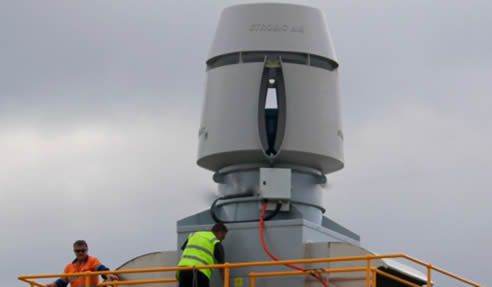Considerations when Addressing Odour Control Issues

When operating any commercial or industrial facility that produces odours, be it a restaurant through to a chemical plant, or manufacturing facility, your business may be at risk of being issued fines or shut down if you are unable to keep the odour levels under control.
Goal posts on odour control are not fixed, and changes occur in national and local regulations on an irregular basis, which make matters more complicated. Local regulations are often based on the goal of achieving "happy neighbours", and as the composition of neighbourhoods change, so does the measure around odour control.
Camfil Airepure can help you solve odour control issues that may arise at your place of business with their extensive knowledge and expertise in cost-effective odour control solutions.
Camfil Airepure offers a range of odour control solutions. The most cost effective time to contact Camfil Airepure to discuss your odour control requirements is during the design stage of a new industrial facility or a development project. Working with Camfil Airepure on the initial planning and design stage ensures that the appropriate solution is designed and integrated into the fabric of the building. However, as is often the case in regulations, environments and business requirements change, and if you are facing these changes, you will need to consider contacting Camfil Airepure to ensure your odour control requirements continue to be met during the modification.

The following checklist covers the key considerations when addressing an odour control issue at your industrial facility:
- Ensure you are compliant with State EPA emission regulations
Environmental Protection Authority (EPA) is a governing body that checks and regulates chemical emissions that focus on achieving a safety level of air emissions at the national and state level.
Camfil Airepure can also assist you in taking your first step in complying with EPA regulations.
- Collect local council ordinances to assess criteria you must comply with
EPA is the one responsible and has powers for the range of environmental legislation that trickles down to the various local city council.
Camfil Airepure can help you in working with local city council regulations to meet odour control requirements.
- Conduct odour and wind studies through an independent consultant
Laboratory services that are accredited with NATA (an independent body that provides accreditation services), also conducts inspections and air sample analysis. Odour and wind studies could quantitate your odour issues and could prevent your business from being at risk of interruption. It is important to know the local wind patterns at your facility as they may result in a lower or higher complexity of required odour control system. For example, in certain facilities, pre-trailing wind direction situations can save thousands on odour control because of the natural wind dilution that occurs.
- Consider changing industrial processes to mitigate odour issues
In some cases, a simple substitution of a component or a small change in the process can dramatically reduce an odour issue. Conduct a review of your industrial processes to see if there are alternatives that could save you from odour issues without compromising your product or process quality.
- Consider isolating the emission to a smaller air volume (fume hood)
Collecting and isolating fumes, then using "dilution" exhaust systems with high stack heights will limit the impact of hazardous or toxic fumes through efficient dilution and plume air exhaustion. Strobic Air Stack from Camfil Airepure is a cost-effective odour and low noise solution that prevents re-entrainment and limits staff exposure to toxic vapours.
If you are building a new industrial facility, or need to update your odour control systems to meet new requirements; Camfil Airepure can offer you a range of practical and high-quality solutions.
Consult with the experts at Camfil Airepure today.

|






 AIRAH Product of the Year Kaire®
AIRAH Product of the Year Kaire® HEPA Box-type Compact Filters by Camfil
HEPA Box-type Compact Filters by Camfil Dust & Fume Collection Systems - Gold
Dust & Fume Collection Systems - Gold Compact Dust Collectors - Quad Pulse
Compact Dust Collectors - Quad Pulse High-temperature HEPA Filters from
High-temperature HEPA Filters from CleanSeal Terminal HEPA Housings from
CleanSeal Terminal HEPA Housings from Safe Change HEPA Filter Containment
Safe Change HEPA Filter Containment HEPA Panel Filters - Megalam by Camfil
HEPA Panel Filters - Megalam by Camfil Terminal HEPA Filter Housings -
Terminal HEPA Filter Housings - Energy Saving Ventilation Filters -
Energy Saving Ventilation Filters - In-room Air Cleaners from Camfil
In-room Air Cleaners from Camfil Filters for Food Processing - ProSafe
Filters for Food Processing - ProSafe Energy Efficient HVAC Bag Filters -
Energy Efficient HVAC Bag Filters - Chemical Media for Gaseous Filtration
Chemical Media for Gaseous Filtration Air Filtration of Commercial Buildings
Air Filtration of Commercial Buildings Manifolded Fume Exhaust System for UNSW
Manifolded Fume Exhaust System for UNSW Environmental Air Quality Control with
Environmental Air Quality Control with Disposable Air Filters from Camfil
Disposable Air Filters from Camfil Commercial Air Filtration for Kitchen
Commercial Air Filtration for Kitchen Efficient Air Filtration Systems with
Efficient Air Filtration Systems with
